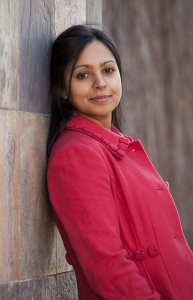
After winning the Caine Prize for African Writing in 2006 for your short story, ‘Jungfrau’; what made you decide to write the psychological thriller, The Cutting Room?
I wanted to write a book that reflected on the experience of crime in South Africa. I also wanted to explore a relationship that was riddled with contradictions. Most simply, it’s a book about how people do bad things to each other, however subtle or dramatic.
The Cutting Room is a compelling story that keeps readers turning the pages. Do you have any advice for aspiring writers wanting to achieve this effect with their work?
It’s quite a reflective book, with a fair amount of interiority which is a bit tricky in a thriller which is usually fast paced. One of the challenges in writing it was to balance the reflection and the action; the more introspective pieces occur alongside several questions and conflicts that need to be resolved.
As well as your writing, you have been involved in teaching film studies. What impact do you think your knowledge of and interest in film has had on your novel?
Studying film certainly makes me think more visually. Also, one of my main interests in film studies is film editing and I think that this has affected how the book is put together. The book moves between different times and includes the vignettes of the haunted house so the story is not entirely linear. I didn’t write it chronologically, starting at the beginning and moving to the end. Rather, I worked in layers and effectively edited it together towards the end.
The haunted house motif is a powerful one, how did you come upon this idea?
One of the concerns of the book is the relationship between different kinds of spaces and the people who inhabit them. The haunted house seemed like an extreme example of this, where a building is given a presence and seems to come alive, possibly acting in a malevolent way towards its occupants.
You’ve included letters written to newspapers at the end of each chapter. What was the idea behind this and what were you hoping to achieve?
The newspaper letters function as a kind of Greek chorus and also punctuate the story with the underlying concerns about crime. Read together, they become a shrill commentary about crime and general bad behaviour in South African society, but the tone is fraught as it attempts to communicate the constant, but usually low-grade, anxiety about crime.
Who is your favourite character in The Cutting Room and why?
All of the characters are flawed. Lucinda is not entirely likeable, but I am sympathetic towards her – in real life, no-one is likeable all of the time. For me, her flaws make her more interesting. The book is almost ostentatiously discreet about her bad behaviour, the nights out partying and drinking too much, her selfishness and materialism.
Why do you love writing?
I love creating a fluid, coherent world. I love stitching together scenes with ideas, images and themes that relate to each other: writing a book becomes almost like a puzzle. I enjoy exploring the darker moments that make up the ordinary.
Are you currently working on a new novel? If so, please could you tell us a bit more?
Yes. I’ve returned to an earlier interest in fantasy.
Mary Watson (born 1975 in Cape Town) is a South African author who won the Caine Prize in 2006 for her short story “Jungfrau”. Watson is the author of Moss, a collection of short stories published in 2004. Watson completed her masters degree in creative writing under André Brink at the University of Cape Town. “Jungfrau” originated as part of this 2001 masters thesis. After receiving a second masters degree at the University of Bristol in 2003, she returned to Cape Town to teach film studies while pursuing a PhD. Mary has lived in Galway, Ireland, since 2008.
Photograph credit: Rolex/Bart Michiels






